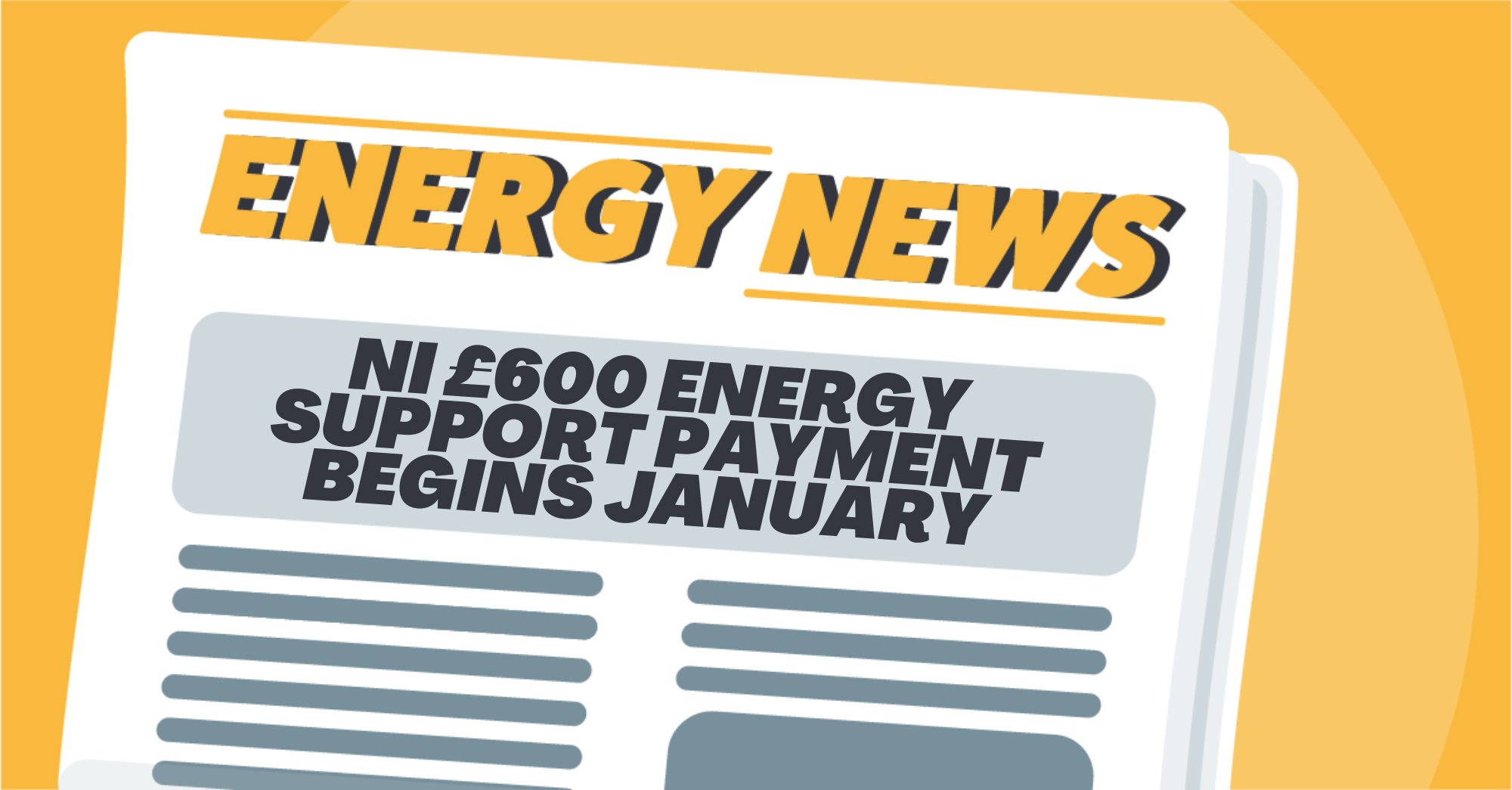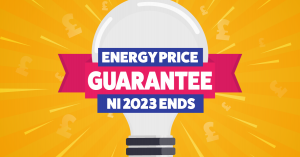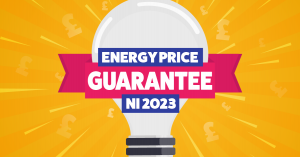Good news for energy users across Northern Ireland—the £600 energy support payment for households will be rolled out from January 2023!
After much uncertainty over how the payment would work amidst the collapse of the Stormont Assembly, the UK government has confirmed that those who pay for their energy via direct debit will have the one-off payment deposited directly into their bank accounts. Others will be sent a redeemable voucher. As of yet, there is no exact date for when this support will start or by when it should be delivered, and it is likely when payment is received will vary across energy suppliers.
Secretary of State for Northern Ireland Chris Heaton-Harris said: “I am grateful that officials and ministers and energy suppliers have found a solution, especially given the complexity of NI’s energy market, although I would have liked to have seen Northern Ireland political parties deliver this as part of a restored Executive.”
What is the Energy Bill Support scheme?
The Energy Bill Support Payment scheme was first announced by the UK government in May 2022. Households in England, Wales and Scotland will have their electricity bills reduced by a total of £400 over six months (October 2022 to March 2023). Northern Ireland was to receive similar levels of support, but the mechanics of this were unconfirmed due to the collapse of Stormont.
£200 extra was to be issued for those in Northern Ireland under the Alternative Fuel Payment scheme as a higher proportion of households in this region use heating oil.
Do I need to apply to receive the payment?
No, you do not need to contact your electricity supplier to receive the payment. It is an automatic payment for every household with an electricity contract—no application or additional contact required.
Those who will receive the redeemable voucher will have further clarity “shortly”, according to the government. It is anticipated that people will receive it via post or email, and redeem it at a Post Office.
How electricity suppliers deal with providing payments to customers will be important to assess. Some suppliers have around 90% of their customers on prepayment meters so this only reinforces the need for clarity on how the government intends for the £600 payment to be made to these customers.
Do I need to spend this on energy bills?
While the Energy Bill Support Scheme was devised to help households pay their electricity bills, the payment will be made directly into your bank account to use as you see fit. This was to prevent money resting in electricity accounts while gas or oil payments went unpaid, and can go towards other items and services for your home.
In regards to this, Energy Minister Graham Stuart last month said that there was “no point” having an electricity credit which did not assist with other costs this winter.
Are you struggling to cover costs?
If you are having difficulty covering your energy bills at the moment, you can check out a few top tips on how to save more money and get the most out of your energy deal:
- Get on the best tariff: Check what tariff you are on with your current supplier. If you are on standard rate this is usually their most expensive. Many suppliers will offer a discount tariff rate (usually for the first year). It is possible to find tariffs with discounts of up to 20%, which can help offset price increases. From time to time suppliers may also offer ‘Fixed Price’ tariffs which will guarantee your rate for a defined time period.
- Cashback deals: Many tariffs also come with additional perks such as cashbacks or free credit for keypad deals. It’s always worth checking out these deals to see if they suit what you need and help keep costs lower.
- Billing and Payment: If you are on a bill pay deal where you pay every month or quarter, how you are billed and how you pay can affect how much you pay. Often the best deals are available to customers who choose Direct Debit and online bills.
- Renegotiate: If you like your current supplier and don’t want to switch you should try to renegotiate for reduced costs. Often a supplier will offer an existing customer a better deal as it can be easier to hold on to a current customer than attract a new one.
- Switch to a better deal: Some people may feel that if most suppliers are increasing prices, what is the point of switching? The key here is that not all suppliers have increased their costs, and that even if they do, all of these suppliers purchase their energy in different ways and are therefore able to offer different deals. For example, currently, there is a difference of £130 between the cheapest and most expensive electricity deal in Northern Ireland.
- Exit Fees ‘on hold’: Many energy tariffs come with a fixed term or contract (e.g. 1 Year) and there can be an exit fee if you decide to leave the deal early. However, when your supplier changes their price they must inform you at least 21 days in advance of any new prices coming into effect. During this time, and up until the new tariffs kick in, you can leave and switch to another supplier without having to pay an exit fee.
Switching to a better deal
For those seeking better value often the best option at the moment is to switch. On average people who switch electricity suppliers using Power to Switch have saved on average £143. Switching is quick, hassle free and means you keep more money in your pocket – you don’t even have to tell your old supplier you are leaving.
Don’t get angry about price rises today and forget about it tomorrow. Take action and switch.
For more information, advice and support on energy issues visit Power to Switch or follow us on Facebook or Twitter.





